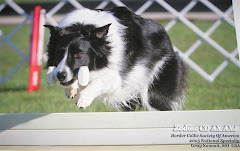In light of recent events I decided to start a series of posts on common pet poisonings. Not only is it handy information for pet owners it's also a good review for me!
Not surprisingly we will start with Antifreeze or Ethylene Glycol...
Antifreeze is one of the more deadly intoxications in veterinary medicine. This is in part because of the necessity of instituting treatment right away but also because the toxic dose is so small. As little as 4.4 mL/kg can be toxic to a dog and only 1.4 mL/kg it toxic to a cat. To put that into perspective that is 60 ml (2 ounces) for a 30 lb dog or just 6 ml for an average 10 lb cat! As you can see cats and small dogs are at greatest risk because of the smaller volumes needed for toxicity. That much can easily be obtained from underneath a leaky vehicle or from an accidental spill.
So why would a dog or cat drink antifreeze anyway? Unfortunately antifreeze tastes sweet making it a tasty winter treat for free roaming dogs and cats. Also note that there is a safer antifreeze product available for use made from propylene glycol. This product is 3 times less toxic than the classic ethylene glycol and consequences of ingestions and less severe. It should not be used carelessly though-continue to keep away from pets and use caution!
So what makes antifreeze toxic? Ethylene glycol itself is not actually toxic-it is the products of metabolism that cause the damage. The enzyme alcohol dehydrogenase begins the metabolism of the ethylene glycol that ultimately leads to the production oxalic acid which binds to calcium, forming crystals which are deposited in the kidneys.
Alcohols, including ethylene glycol are rapidly absorbed from the stomach and metabolism starts quickly so if you see your pet licking antifreeze or you suspect they may have-go immediately to the vet! Other signs of intoxication include vomiting, anorexia, lethargy (I know, not very helpful), and wobbliness or acting drunk (more helpful). In later stages coma, seizures, oral ulcers and decreased urine production can be seen. Prognosis in the later stages is poor.
Treatment is aimed at slowing down or stopping the metabolism of the ethylene glycol. Fomepizole is a veterinary product that completely inhibits the action of alcohol dehydrogenase thus allowing the ethylene glycol to pass through the system without producing any toxic metabolites. This is the preferred treatment in dogs. Fomepizole is not inexpensive and some clinics may not keep it in stock. For cats there are some studies showing that high doses of Fomepizole started within 3 hours of ingestions is a successful treatment option. There is however, risk of anaphylactic reaction with this product. The alternative treatment option for cats, and dogs for whom Fomepizole is not an option is intravenous ethanol (i.e Everclear). Ethanol competes with the ethylene glycol for the alcohol dehydrogenase. So if we can keep the alcohol dehydrogenase busy metabolizing the ethanol into non-toxic metabolites the ethylene glycol can leave the system safely. Obviously there are side effects to this treatment-depression, hypothermia, acid-base imbalances, etc. The rest of the treatment is supportive-fluid therapy, monitoring of certain blood values, maintaining body heat, monitoring urine production, and pain management for the hangover once you discontinue the ethanol!
Remember the key points of this post are limit exposure and treat early!

.jpg)



.jpg)


